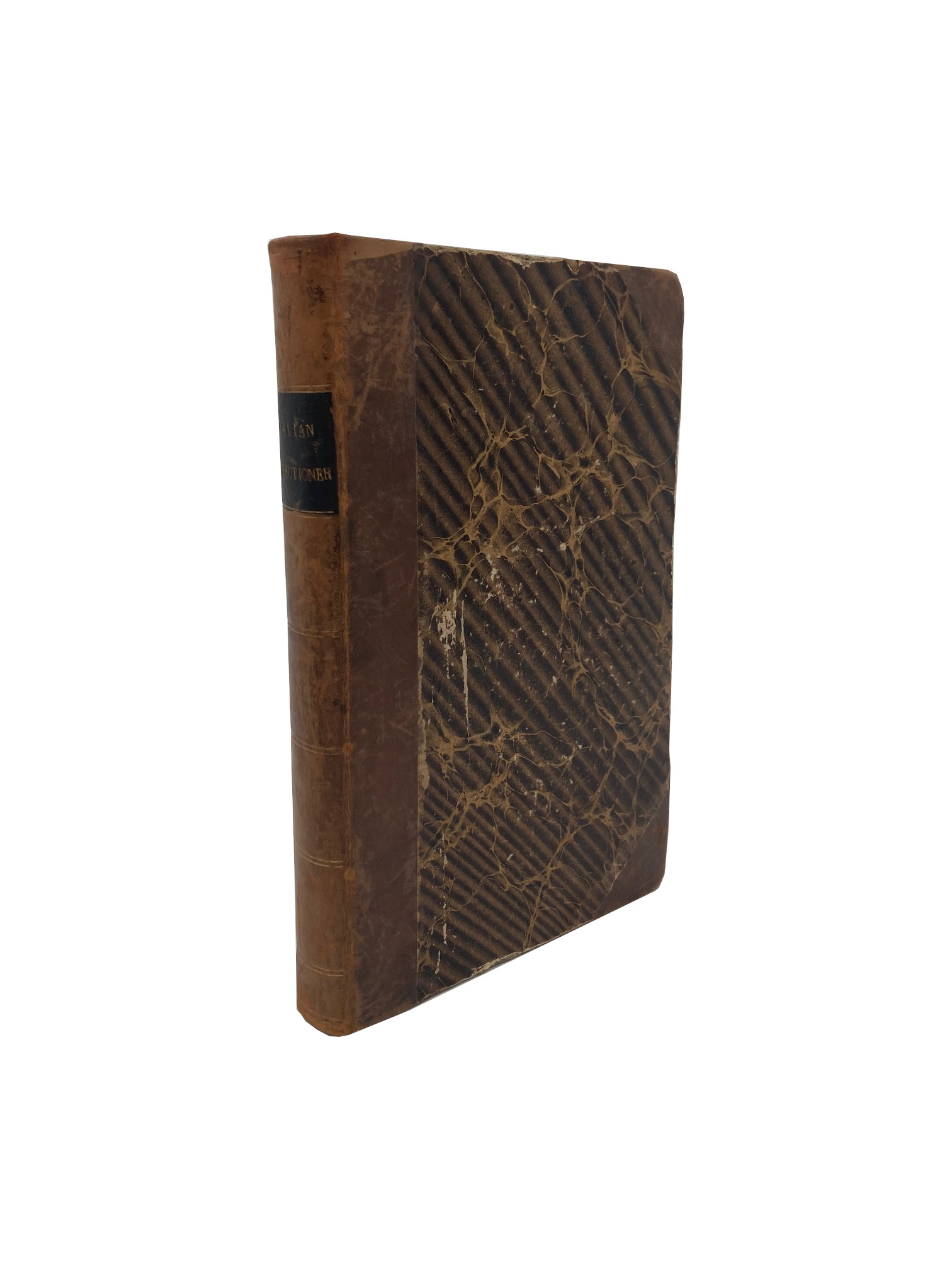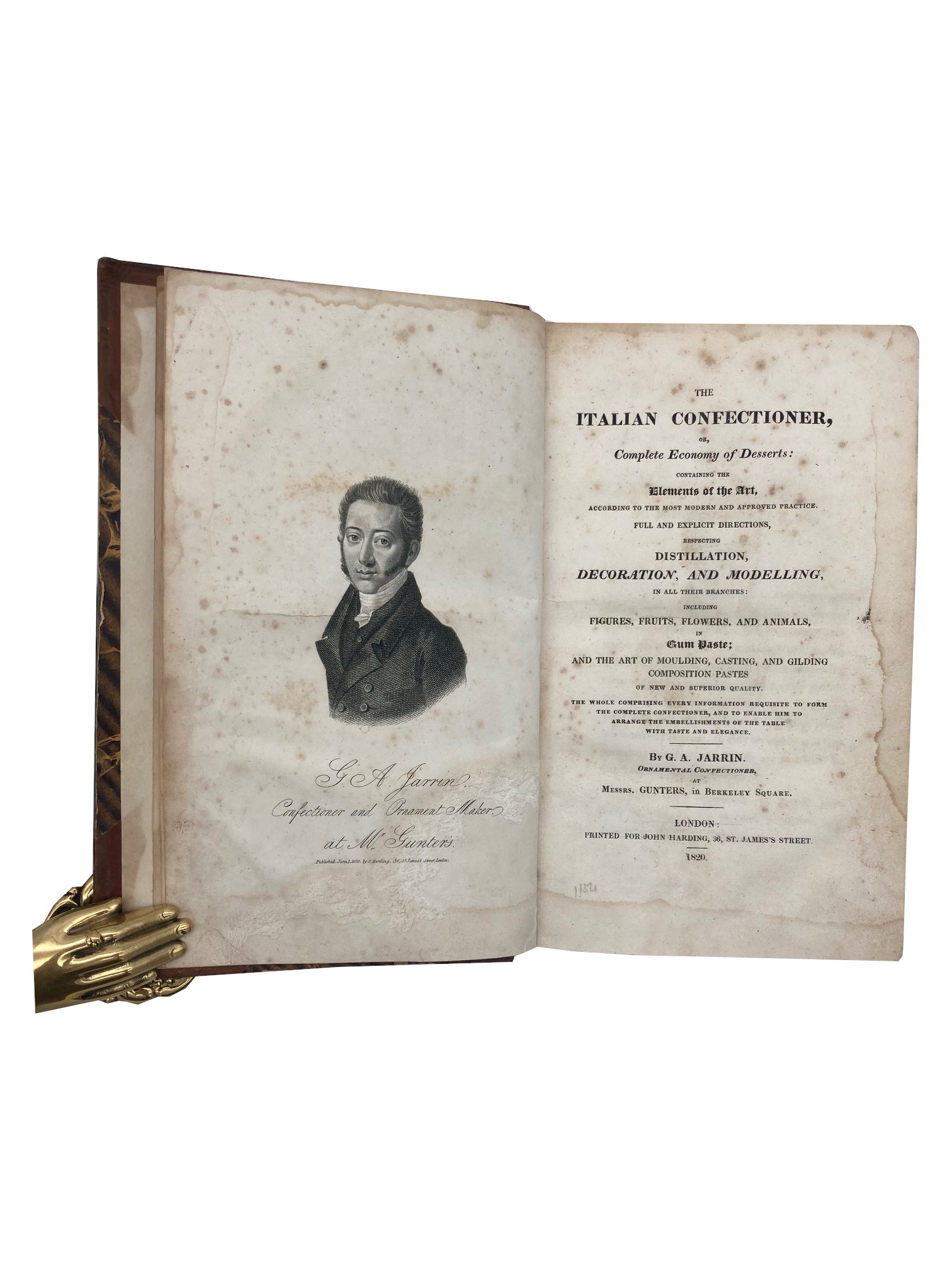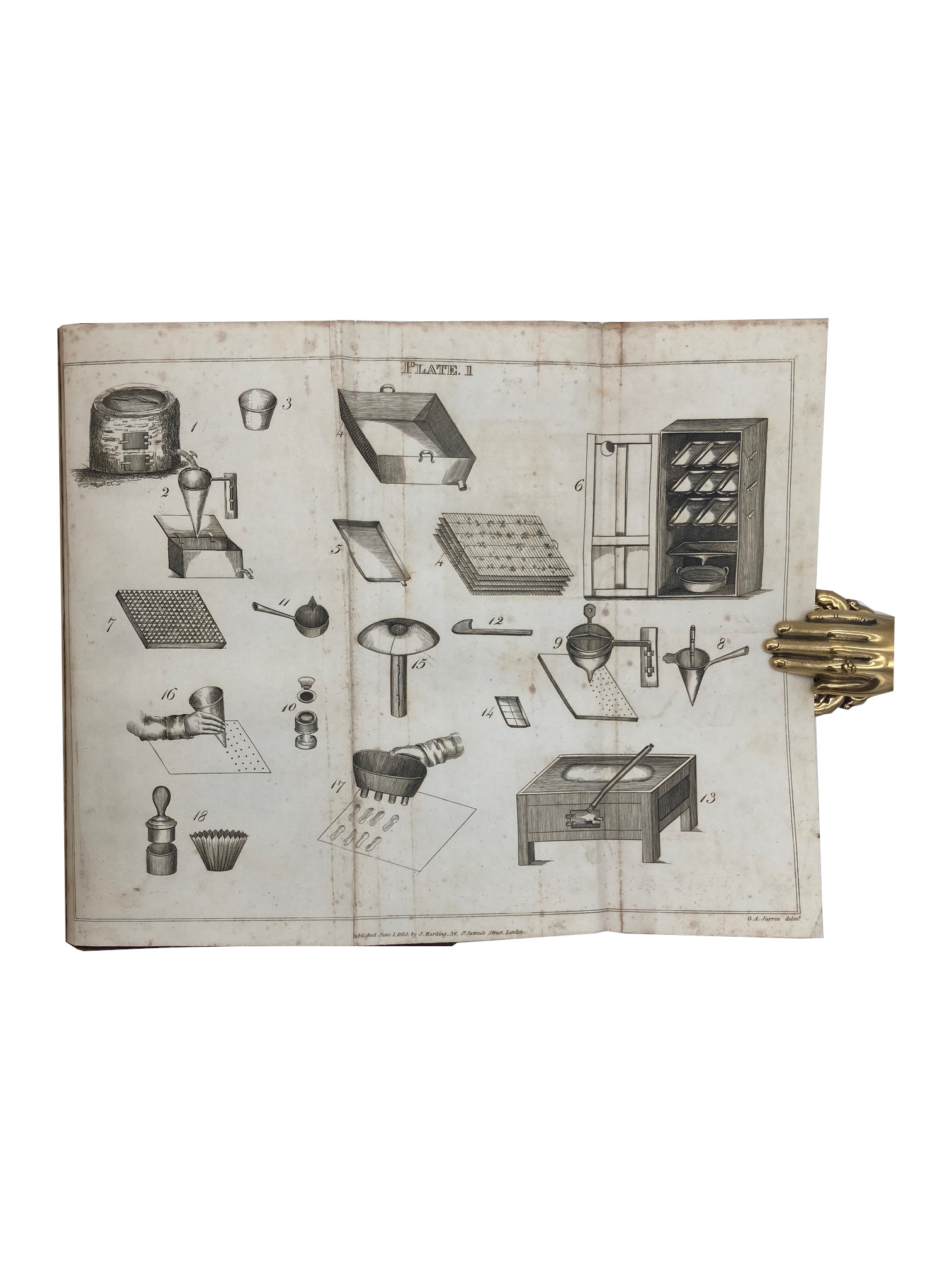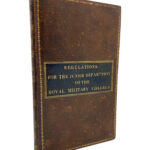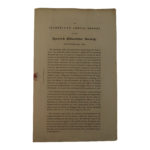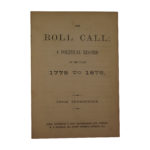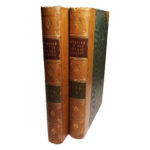Description
[004255] Jarrin, G. A. The Italian Confectioner, or, Complete Economy of Desserts Etc. Etc. ill. Jarrin, G. A. London: John Harding, 1820. First Edition. 8vo. Hardback. Good. [3], vi-xxiv, [1], 2-280pp, plates. Slightly later half calf and marbled paper over boards, smooth back divided into six panels by gilt double rules, leather title label to second panel
Spine slightly faded, rubbed to extremities, fore edge of upper cover worn. Front inner hinge cracked but holding well, portrait frontispiece damaged with old repairs to reverse, text stained to fore and bottom edges, gradually fading, but never particularly obtrusive, occasional light foxing and a few page edges chipped and worn, a few instances of pen marginalia to recipes, the first folding plate with a couple of old paper repairs to reverse, a couple of former owner’s names to front pastedown and ffep
With an engraved portrait frontispiece and two folding plates as called for, but probably lacking the half-title
The full title is The Italian Confectioner, or Complete Economy of Desserts, Containing the Elements of the Art According to the Most Modern and Approved Practice, Full and Explicit Directions Respecting Distillation, Decoration, and Modelling, in all their Branches: Including Figures, Fruits, Flowers, and Animals, in Gum Paste; And the Art of Moulding, Casting, and Gilding Composition Pastes of New and Superior Quality. The Whole Comprising Every Information Requisite to Form the Complete Confectioner, and to Enable Him to Arrange the Embellishments of the Table with Taste and Elegance
The author was Guglielmo Alexis Jarrin, 1784-1848, (with later versions anglicising his first name to William), who was born in Italy, seemingly spent time in France, and by 1819 was “employed as confectioner and ornament maker for James Gunter’s, confectioners, in Berkeley Square, London
In 1820 Jarrin published The Italian Confectioner, through which he is best known. The book sits within an English tradition of publishing recipes for food and confectionery, but it reveals more about the techniques involved, and about the character of the author, than was usual in the genre. Written when confectionery production was on the point of being industrialized through the activities of such contemporaries as Joseph Terry of York, it represented the high point of artisan skills in the craft, which Jarrin believed could not be improved upon. He devoted several chapters to his speciality of making ornaments for the dessert table using various edible and non-edible materials. Other chapters covered more standard ground including recipes for small confections, preserving fruit, and making ices, but with details which throw light on both his own skills and continental practice. He provided instructions on modelling and wood carving (one wooden confectionery mould signed by him has come to light), and evidently possessed artistic talents, for he signed the two engraved plates illustrating confectionery equipment. Proud of his ingenuity as an inventor, Jarrin described inventions and improvements he had devised for making confectionery. The Italian Confectioner was reprinted at least ten times (the last in 1861, after his death), and was updated with new material on several occasions” (ODNB)
cf. Bitting, pages 244-5; Cagle 776; Oxford, page 149; Simon BG, page 86 (for later editions); Wellcome III:348 (also seemingly lacking half-title)
